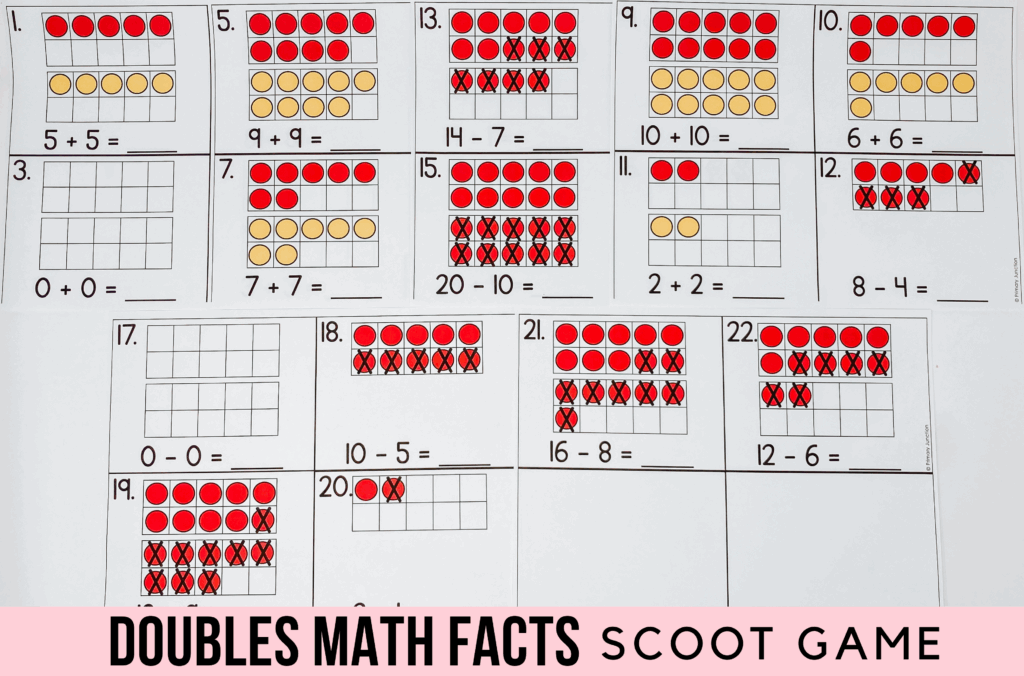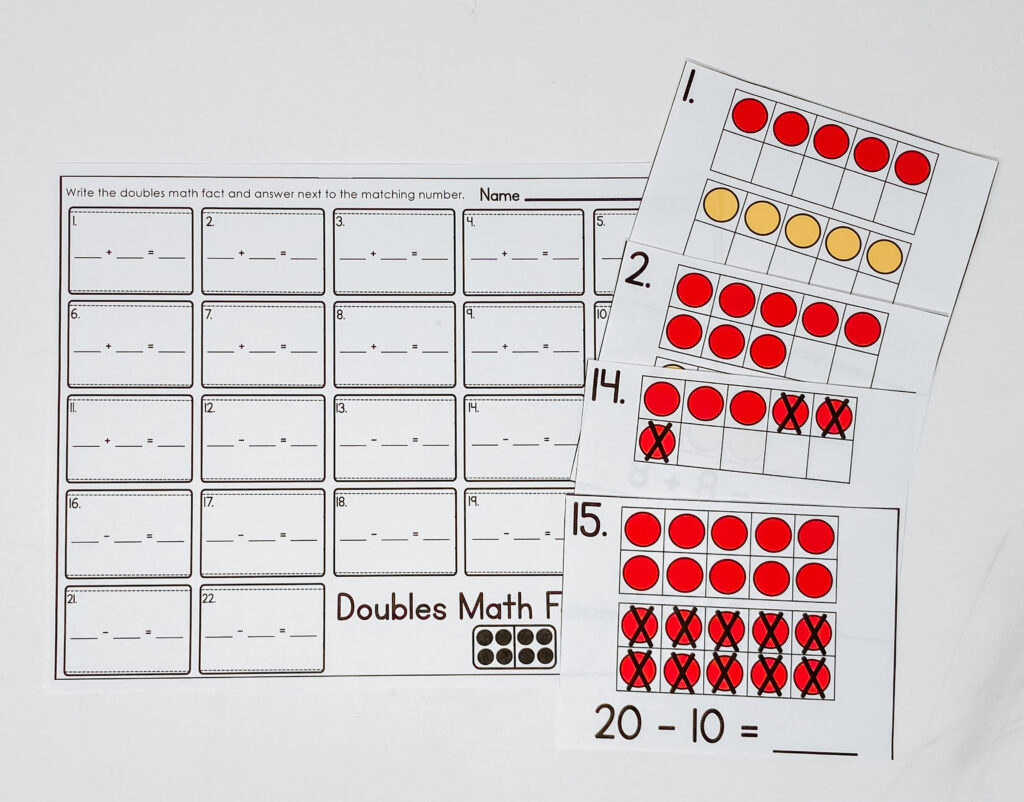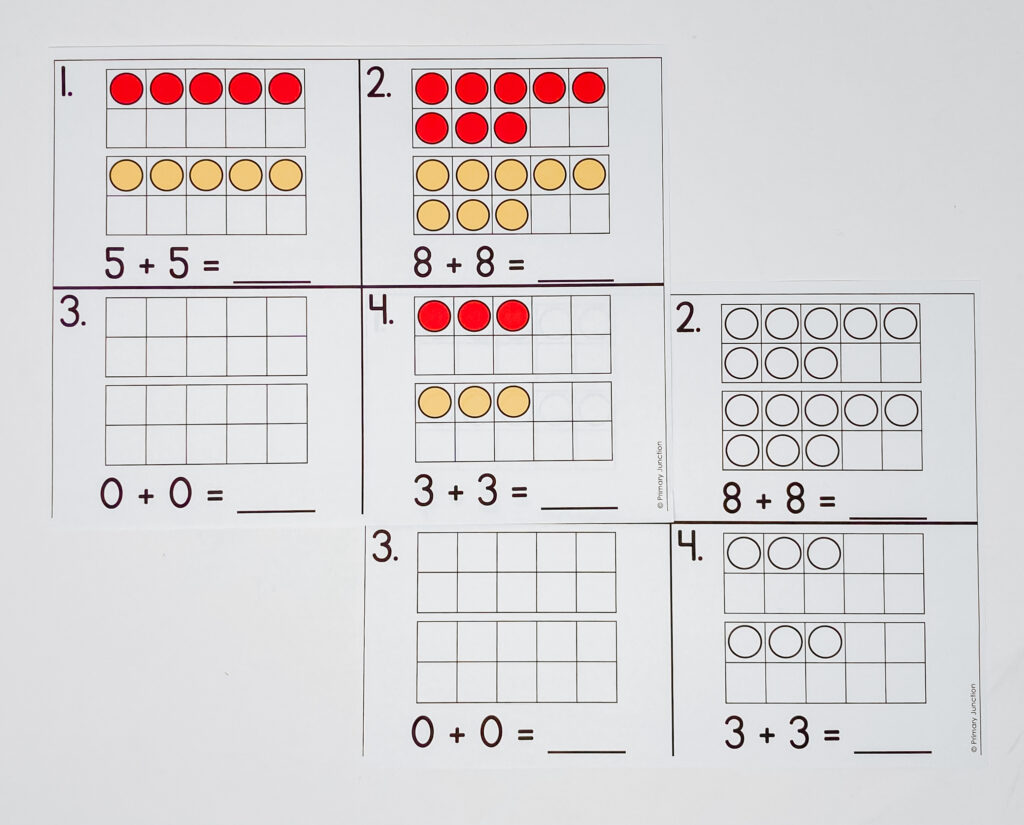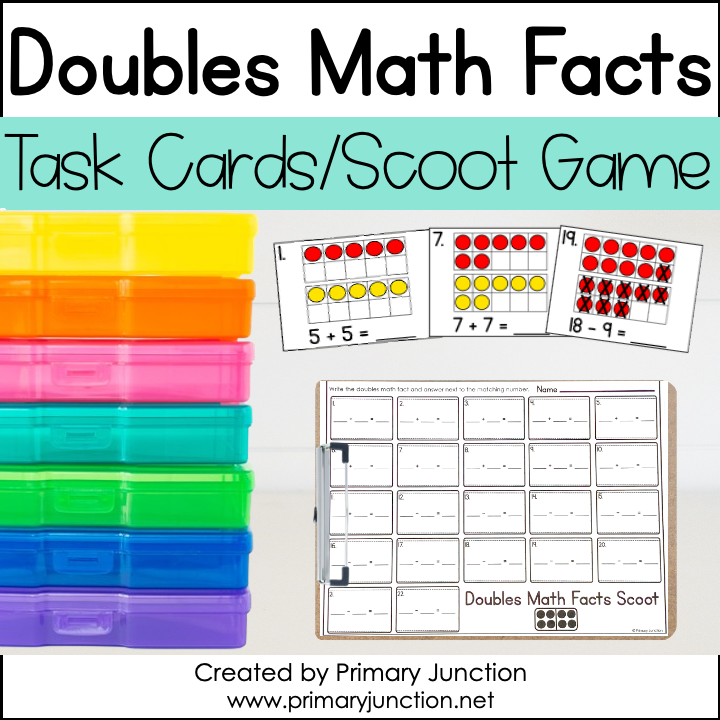How I Teach Doubles Math Facts (Without the Groans)
Let’s be honest—teaching doubles math facts can feel a bit like Groundhog Day. You know what I mean…
4 + 4 = 8
4 + 4 = 8
4 + 4 = 8
Again and again until it (hopefully) sticks.
So when I realized my kids were zoning out during our doubles drills, I knew I had to find a better way to keep them practicing—but without making it feel like a chore. That’s when I started using this Doubles Math Facts Scoot Game, and it’s honestly become one of my favorite activities for building fluency with addition and subtraction.
Let me tell you how I use it, and a few little tweaks that make it easy to manage in any first grade classroom.
Doubles Can Be Tricky at First—But So Worth It!
I’ve found that once kids really understand and internalize their doubles facts, everything else just gets easier. They use doubles to solve near doubles, to subtract quickly, to break apart numbers, and even to recognize patterns in bigger numbers later on.
But first—they need lots of practice. And we know they don’t want to sit at their desks solving 3 + 3 and 6 + 6 a hundred times in a row. 🥱
That’s where this Doubles Math Facts Scoot Game has come in handy. The game adds movement, the ten frames offer support, and the built-in repetition feels a whole lot more like fun than drill.
What’s in the Set?
This Doubles Math Facts Scoot Game Set includes:
- ✏️ Task/Scoot Cards for addition and subtraction doubles facts up to 20
(Color and black-and-white included!) - 📄 Student recording sheet that’s super easy to follow
- ✅ Answer key for quick checking or self-assessment
- 🗂️ Simple teacher instructions for setup
The best part? The facts included go beyond just addition:
- Addition: 0+0 up to 10+10
- Subtraction: 20-10, 18-9, all the way down to 0-0
I love that it spirals both skills—because when subtraction enters the mix, some students need a refresher on how it all connects.
How I Use the Doubles Scoot Game in My Classroom
Scoot is such a classic for a reason, right?
Here’s my usual setup:
- I lay out one task card on each student’s desk (you can also tape them around the room if doing Write the Room).
- Each student grabs a recording sheet and a pencil.
- I model how to read the ten frame, figure out the double, and write the answer in the box that matches the card number.
- I say “SCOOT!” when it’s time to rotate.
Sometimes I skip the whole group practice and just let them work at their own pace in Write the Room style. This is a great option during math centers, especially if you’ve got a smaller group or a more relaxed schedule.
A Few Tips That Have Helped Me:
- Use the black-and-white cards for an ink-saving version, or challenge students to color-code doubles facts with crayons or highlighters.
- Laminate the cards and give students dry-erase markers if you want to reuse them as a center or early finisher option.
- When doing subtraction facts, encourage students to start with the double and “think backward.” For example, if the card says 18 – 9, they can think: 9 + 9 = 18. Oh! That’s a double!
- Add some movement breaks between rounds if the wiggles set in. Even a quick “Simon Says” will do the trick before jumping back into Scoot mode.
Other Ways I’ve Used These Doubles Math Facts Scoot Game Cards:
This isn’t just a Scoot Game—these doubles fact task cards are so flexible:
- I’ve used them in guided math groups when I want to reinforce fact fluency.
- They’ve been a great partner game—students take turns reading and solving.
- I’ve even turned them into a “Math Around the Room” scavenger hunt where kids walk with clipboards and complete a card at each station.
If you’re looking for something easy to prep, easy to manage, and effective at helping students master their addition and subtraction doubles, this has been a winner for me.
Final Thoughts (From One Teacher to Another)
Sometimes the most basic math skills—like doubles facts—need the most creative teaching. And you don’t have to overcomplicate it! With a few cards, a simple recording sheet, and a little movement, you can make doubles practice something your kids actually enjoy.
Whether it’s during a whole group Scoot Game, a center-based Write the Room activity, or just some quiet fluency practice with task cards, this activity has saved me more than once.
And honestly? It’s kind of fun to watch them shout “I KNOW THIS ONE!” as they zoom from card to card. 😊
If you want to grab a copy to use with your students, you can get it here. Happy Learning!




